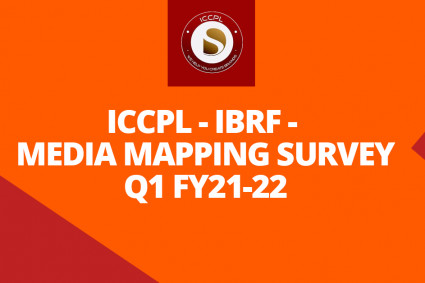
Since 1840, stamp collecting has gradually been one of the most popular hobbies in the world. We can find historical, geographical, or political information from the stamps. And you can also enjoy the beauty in it.
Then, as a green stamp collector (philatelist), what do we have to know about stamps?
Don't be puzzled!
This article is aimed to inform you the useful information about stamps and teach you to start collecting stamps.
9 Things You Should Know about Stamp Collecting
1. What was the first stamp to be collected?
2. Is it worth collecting stamps?
3. Four benefits you can obtain from stamps
Historical significance
Cultural significance
Social significance
Emotional significance
4. Seven standard glossaries you need to know
5. What kind of stamps do you prefer to collect?
General Purpose Stamps
Forever Stamps
Commemorative Stamps
Semipostal Stamps
6. Where Can You Get Your Postage Stamps?
7. Four Essential Tools for Stamp Collecting
Stamp Tweezers
Stamp Catalogue
Stockbooks
Magnifying Glass
8. How to care for your stamps?
9. Can you sell your stamp collection?
10. Summaries
1. What was the first stamp to be collected?
● The Penny Black
The Penny Black is the first stamp in the world. It was produced in the U.K. in 1840, and this small stamp changed how people sent the post. There was the image of the head of Queen Victoria, which is because of the visit of Queen Victoria to London City. So William Wyon designed her head on the stamp.
This small piece of paper becomes extremely popular after its publication. And various stamps were produced all around the world.
Then, what kind of significance can we figure out from these large amounts of stamps?
Okay, the next part is the explanation.
2. Is it worth collecting stamps?
Nowadays, stamp collecting is one of the most popular hobbies in the world, with over 20 million collectors worldwide!
● The great appeal of philately is that you can acquire and collect stamps exactly as you see fit, on your own time and effort.
Stamp collecting only takes up a little of your time or money and can be done as a cheap hobby. And there are great platforms worldwide where you can share this fun and fascinating feeling with other philatelists. Whether you want an activity you can do alone on a weekend or decide to get into it, philately is a great option.
● There is a wide variety of stamps from around the world, and your collection can be anything you want or anything that makes sense!
If you have a lot of disposable income, you can also build up a collection of stamps with a high value much faster. Don't worry if you don't have enough money. An expensive stamp library is neither the goal of many collectors and certainly not the best way for you to enjoy collecting stamps.
3. Four benefits you can obtain from stamps
Stamp collecting helps instruct the collector in geography, biography, history, culture, and art. Stamps are miniature gateways to the world. The historical, cultural, and collection values among them are worthy of careful study, and collecting stamps also dramatically impacts our psychological development.
Historical significance
Stamps are carriers of history and culture, witnessing the development of history and changes in ideas.
For example, the rabbit is believed to symbolize luck, prosperity, and a fresh start in China. And in Europe, rabbit stamps were also applied during the 19th century as ornaments for their letters and packages to wish for a promising future.
Furthermore, the butterfly stamps are regarded as symbols of beauty, delicacy, and transformation. People can always feel freedom and enjoyment when they collect stamps.
Cultural significance
A stamp is a paper full of other countries' cultural stores, currencies, and landmarks. In short, you can learn about various cultures from various countries. So stamps are an excellent tool for teaching, according to the discovery-based method.
Social significance
As a philatelist, you would join at least one club for collecting stamps, so you have to get a chance to interact with others in weekly meetings. This is a treasurable way to share ideas and make friends with people from all over the world. As a result, you can improve your ability for social skills.
Emotional significance
You can feel satisfied and happy when you spend time collecting, and then you will understand good old memories of past centuries.
4. Seven standard glossaries you need to know
Understanding glossaries can help you make collecting stamps more convenient. Here are a few common professional words that you need to be clear about:
● Philately: The collection and study of postage stamps.
● Adhesive: General term for stamps, specifically those with gum on the back.
● Bar Cut: Groove deliberately cut into the obliterating bars of some stamps to identify the stamper.
● Definitive stamp: A definitive stamp is intended for everyday use over a long period, often depicting the profile of the monarch's head.
● Commemorative stamp: A commemorative stamp commemorates an event or theme, sometimes called 'Special,' as often there is no anniversary involved.
● Error: A stamp that inadvertently has something wrong or some technical feature but has been issued by a postal authority.
● Hectograph: Printing from a gelatine base with a design in a special dye.
And you can find more in Aberdeen Circular Delivery Service
5. What kind of stamps do you prefer to collect?
There are four main types of stamps in circulation today. I will introduce these four types of stamps in this section. You can choose the stamps you want to collect according to your interest.
General Purpose Stamps
Generic stamps (e.g., U.S. flag stamps) are issued year after year, and there is no upper limit to the number produced. And carry many images, including animals; famous people; household items; and revered national buildings.
Forever Stamps
The U.S. Postal Service introduced the Forever Stamp in 2007. So if a customer purchases a Forever stamp and the price goes up, the Forever stamp can still be used to mail letters.
Commemorative Stamps
Used to commemorate or celebrate people, anniversaries, and events such as this. Typically, each commemorative stamp is produced in limited quantities and is only available for one year. Usually held by collectors and sold privately at auctions and on the Internet.
Semipostal Stamps
The U.S. Postal Service would sell the semipostal stamp and then transfer a portion of the proceeds (less the cost to the U.S. Postal Service) to the federal agency designated to administer the funds. The agency then uses the funds for statutorily designated purposes.
Having introduced so much, are some friends already eager to embark on a stamp-collecting journey?
But there are still three questions for you:
Where should you go to find your stamps?
What tools should be used when collecting stamps?
How do you store your stamps?
If you have no idea, then keep reading!
6. Where Can You Get Your Postage Stamps?
● Purchase them at the local postage office
● Ask your friends, relatives, or local neighborhood if any old stamp exists in their home.
● Get help from the United States Postal Service (USPS) retail location.
● Find a personal stamp in retail stores.
● Join stamp clubs.
● Buy them from USPS online stores, third-party websites, virtual postage solutions, mobile applications, etc.
7. Four Essential Tools for Stamp Collecting
Although stamp tools are rarely used at the beginning of stamp collecting, some tools can help us solve many problems.
Here I will introduce four commonly used tools for stamp collecting.
Stamp Tweezers
Tweezers ensure stamps can be moved while removing the chance of destructive oils or creases occurring to the stamp.
Stamp Catalogue
A stamp catalog (or stamp catalog) includes postage stamp types with descriptions and prices.
Stockbooks
Stockbooks are storage books used by stamp collectors to store postage stamps placed in pockets, on pages, for easy viewing.
Magnifying Glass
Using a magnifying glass, you can see the lines or cuts that make up a portrait or scene on an engraved stamp and study the quality and characteristics of other printing processes.
You've got a stamp you like and appreciate, and you can use tools.
Now what can you try for storing and displaying your stamp collection?
And what kind of condition should stamps get?
Let me figure it out in the next paragraph.
8. How to care for your stamps?
● You have to keep your stamps in a high and dry condition. It is not allowed for acid paper. You should store them in tall and dark, dry spaces.
● You have to make full use of the stamp album. Stamp album can help to prevent light damage and keeps stamps safe.
● You have to notice the temperature. Philatelic material should be stored in darkness under 18° centigrade.
● It is not okay to store stamps in plastic unless the plastic is made of a material that states "okay for stamp storage."
9. Can you sell your stamp collection?
The answer is definitely "YES," especially your rarest stamps. You can sell your stamps as a collection or split them into individual lots. But the key point is that you must not rush to sell your stamps before you make a comprehensive estimate.
● You can get professional help from the Philatelic Trader Society.
● Sometimes, you can also obtain a free valuation from a local street stamp shop if it's reliable.
● Stampex, a free annual event organized in Islington in London at the beginning of September, is another authentic place to visit.
● A stamp valuation expert is the fast and maybe accurate option to get the value of your stamps.
So where can you sell your stamp collections?
There are 5 recommendations for you.
● Dealer. A reputable dealer will tell you if your collection has special value and advise if you should sell your item separately or as a collectible.
● Stamp magazines. The well-known publication "Stamp Magazine" is available from larger newspaper dealers, and the classified ads section will help you find dealers and collectors who offer valuation services.
● Stamp fairs. Stamp fairs are held regularly throughout the U.K. and are a great place to meet philatelists and dealers.
● Philatelic Traders Society. Giving a set to the Philatelic Traders Society (PTS) is a great way to ensure that the stamps get into the hands of someone truly interested in philately.
● Sell at auction. By selling your stamp collection at auction after an accurate valuation, you can exchange it for a percentage of the profit.
10. Summaries
How are you getting along with today's stamp-collecting tips? I believe that through this article, everyone beginner has gained much knowledge about stamp collecting. Let's take action quickly and experience the joy of stamp collecting together. And if you want to find many beautiful or meaningful stamps, it is accessible to view our website.






